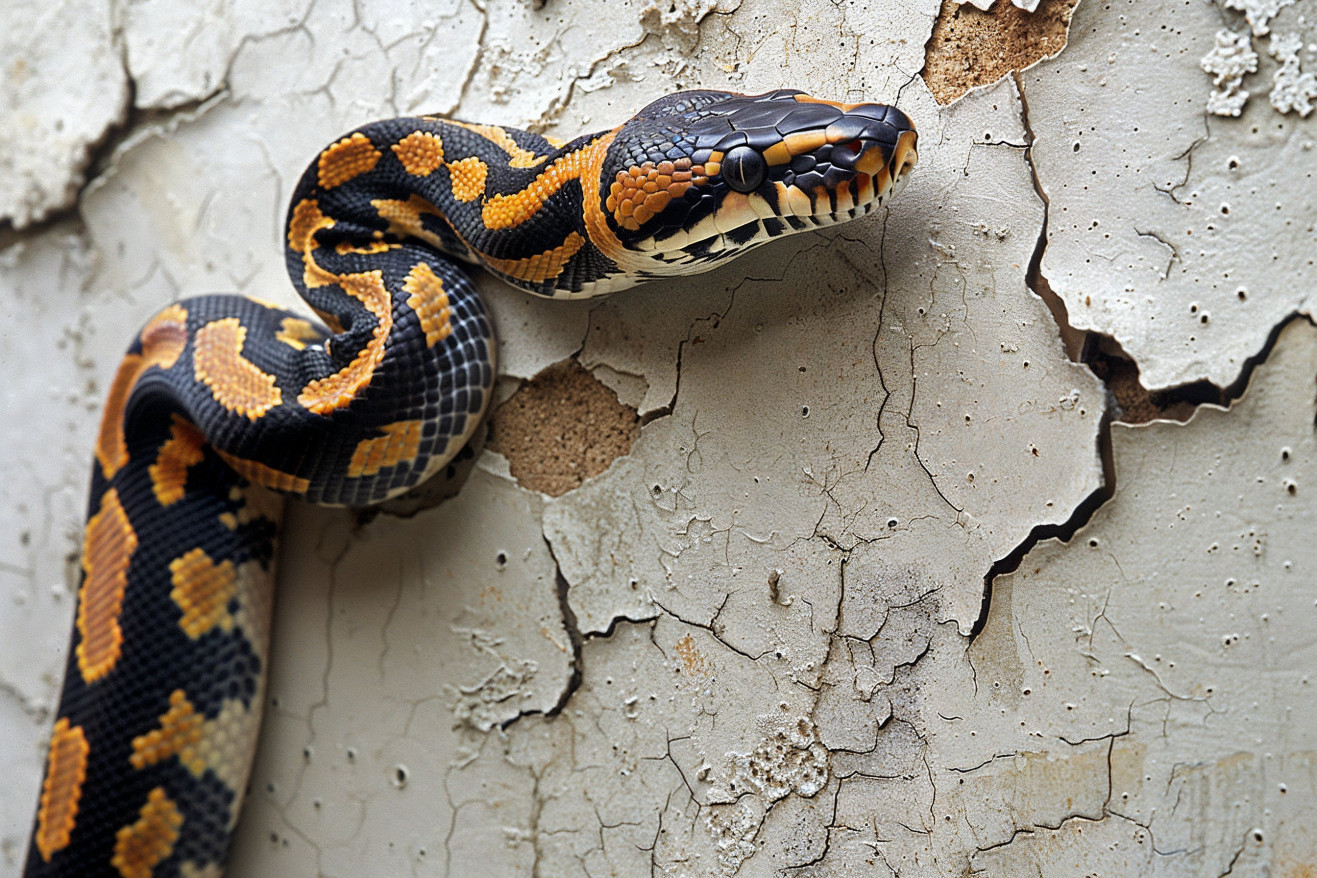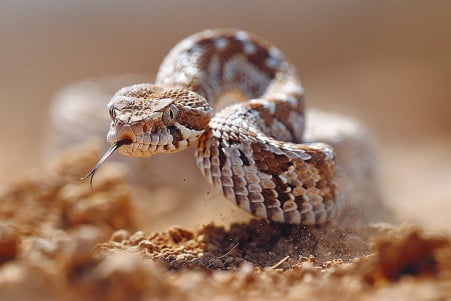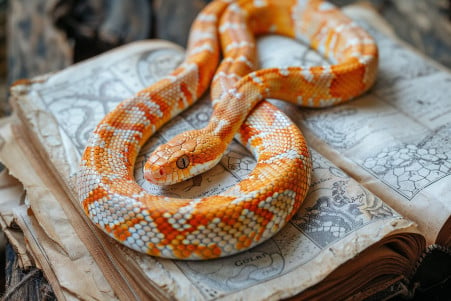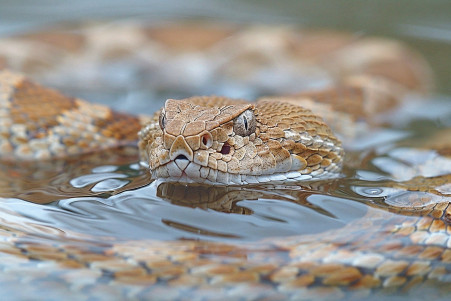Why Do Snakes Climb Walls? The Science of a Reptilian Superpower
3 April 2024 • Updated 2 April 2024

If snakes can climb walls, how do they do it? This article explores the wall-climbing abilities of snakes, which have evolved to climb trees, walls, and other vertical surfaces by using their venomous fangs to anchor themselves to a surface and then using their overlapping belly scales to grip the surface as they move upward by contracting their bodies.
We'll explore the wall-climbing behavior of snakes by looking at anatomical research that has documented the muscular and scale adaptations that make this behavior possible. Meanwhile, behavioral studies and evolutionary biology research have shown how climbing has helped snakes survive by enabling them to catch prey in trees, escape from predators, and find shelter. This reptilian superpower is a great example of how animals have adapted to the challenges of their environment.
Can snakes climb walls?
Muscular Strength: The Anatomical Adaptations of Snakes
Snakes are well-suited to climbing due to their muscular bodies and a number of anatomical adaptations. For example, their ventral scales, which are arranged in an alternating pattern, create friction against surfaces like tree bark and brick walls, enabling them to climb. The arrangement and microscopic structure of these scales also provide directionally dependent friction, which helps snakes climb up while preventing them from sliding down.
In addition, arboreal snakes have adaptations that further enable climbing, including keeled scales, which have a ridge down the center that also helps with grip. Meanwhile, the muscular body structure of snakes enables them to exert a lot of force against a vertical surface. The distribution of muscle mass along their bodies, as well as their flexibility, enables snakes to maintain balance and move along narrow, cylindrical surfaces. These adaptations enable snakes to climb in ways that defy gravity, allowing them to access new habitats.
Climbing Techniques: How Snakes Move Up and Down
Snakes use a range of techniques to climb and move up and down vertical surfaces. The concertina method involves contracting and extending the body in a wave-like pattern to create a series of anchor points that the snake can use to pull itself up. This method enables snakes to move into confined spaces and across uneven terrain.
Lateral undulation, the classic serpentine movement, allows snakes to push off of irregularities to climb up rough surfaces like tree bark. The snake's ventral scales play a key role in enabling snakes to maintain traction as they move using lateral undulation.
Other snakes, such as the brown tree snake, have developed their own unique climbing techniques. These snakes use a method called 'lasso locomotion' in which they form a loop around a tree and then move their bodies in a series of waves to climb up the loop. This specialized form of locomotion enables them to climb up surfaces that are wider and smoother than those that can be climbed using other methods.
The specific method a snake uses to climb depends on a variety of factors including the texture and angle of the surface and the snake's size and strength. However, these adaptations help to explain how snakes have become so successful at overcoming the challenges of vertical locomotion.
Climbing Challenges: Smooth and Slippery Surfaces
While snakes are well adapted to climbing rough surfaces like tree bark, smooth and slippery surfaces present a unique challenge. Snakes are unable to get a good grip on surfaces like glass, metal, or ice due to the lack of friction and irregularities. One study on Embora Pets explains that snakes have dry skin and rely on the friction generated by their scales to climb. However, they are unable to generate enough friction to climb on completely smooth surfaces like glass or ice.
Some snake species have adapted to overcome this challenge. The study on "lasso locomotion" discovered that brown tree snakes can form a loop around a tree trunk and wriggle their way up, enabling them to climb broader, smoother surfaces. In addition, a study found that snakes can press their ventral scales against the surface of a wall and push off with up to nine times their body weight to climb glass.
The snake's size, weight distribution, and the shape and texture of their scales can all impact their ability to climb smooth surfaces. Understanding these adaptations could help researchers develop better grip systems and bioinspired adhesion technologies.
Evolutionary Advantages: Why Snakes Have Evolved to Climb
The ability to climb has given snakes important evolutionary advantages. According to the Scientific American, arboreal snakes can reach prey that lives in trees, like birds, eggs, and small mammals, which increases their hunting opportunities. In addition, climbing has helped snakes escape predators and find refuge in high places, which has reduced their risk of being eaten.
In some cases, climbing has even helped certain species of snakes become invasive species by allowing them to exploit new environments. A study published on Phys.org showed that snakes prioritize safety over energy when they climb, because the extra energy they use up when they climb may not be enough to make a difference to arboreal species. This means that the trade-off between safety and energy may be more widespread in the animal kingdom than previously realized.
Snakes' ability to climb has likely been important in their ability to adapt and evolve in a variety of environments and habitats. By reaching new food sources and avoiding danger, their climbing skills have enabled them to survive in a range of ecosystems, which is a testament to the evolutionary success of these reptiles.
Reaching New Heights: Implications for Future Research and More
Research on snake locomotion and the biomechanics of snake climbing has far-reaching implications for a number of different fields, including biomechanics, robotics, and materials science. In particular, snake locomotion and grip mechanics have inspired the development of new adhesion technologies and climbing robots. A study covered by ScienceDaily even looked at how the diameter and compliance of the rope affected snake movement, which could help us better understand snake musculoskeletal design and behavior.
In addition, understanding the evolutionary adaptations that have made climbing possible can help us understand species diversification and how species have responded to environmental challenges. As noted by MyNatureGuard, a number of factors, including a snake's size, the distribution of its weight, and the shape and texture of its scales, can affect its ability to climb smooth surfaces. More research is needed to understand the complex interactions between a snake's anatomy and behavior and the physical properties of different surfaces during climbing.
Further research into this fascinating reptilian ability could lead to new ways to climb vertical surfaces and overcome mobility issues in a variety of different contexts. By learning more about how snakes climb, we can use nature's solutions to better understand animal adaptations and develop new technologies.
Conclusion: Celebrating Nature's Climbing Wonders
The ability of snakes to climb vertical surfaces is a fascinating example of nature's diversity and creativity. Snakes' anatomical adaptations, physical strength, and creative climbing strategies have allowed them to overcome the constraints of gravity and expand their reach into new ecological niches.
In addition to satisfying our curiosity about snakes, the study of snake climbing has the potential to inform the development of new technologies and applications in areas such as robotics and adhesion. As we learn more about the natural world, snakes' climbing abilities are a testament to the many wonders that remain to be discovered and the many lessons that can be learned from the study of the adaptations of living things.
By protecting the environments of these amazing climbers, we can ensure that people in the future will have the chance to learn from and be inspired by nature's climbing wonders.


